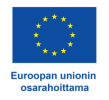The project has the following concrete objectives 1-5, which will create impressive new knowledge to improve the competitiveness of manufacturing industry and promote the green transition:
1. Updating the knowledge needs and practices for continuous learning
The objective is to jointly develop a vision of the sub-specific, overlapping and generic competence needs for continuous learning in the textile and fashion, bioproducts and engineering industries, as well as the training products and delivery methods available, with a view to a carbon-neutral, sustainable and digitally enabled industry.
2. Creating a strategic network for continuous learning
The aim is to build and strengthen a strategic network for continuous learning in three different manufacturing and manufacturing-related industries: textiles and fashion, engineering and bioproducts. The national network will increase cooperation between actors, save resources, bring added value to partners, and increase foresight. The objective of the strategic networks is to ensure, through continuous learning, the competence and competitiveness of industry in the green transition, both now and in the future. In practice, the interaction between the three industrial sectors enabled by the OHITE project will allow the learning and adoption of good practices and approaches and will highlight common continuous learning needs related to the green transition. It also enables the identification of common challenges and their contribution to the process of developing a national service model.
3. Developing a service model for continuous learning
The aim is to develop a user-driven continuous learning service model for updating the skills of self-learners, companies' staff training and labor market training. The service model will improve the accessibility of training services by matching supply and demand. It clarifies the division of labor between training providers and increases cooperation between training institutions and industry associations. The model is intended to work both ways, serving supply and demand. The model will enable companies to become more competitive by improving the skills of their workforce and will increase sustainability and the conditions for moving towards carbon-neutral production.
4. Evaluation of the continuous learning service model
The aim is to evaluate the user-driven continuous learning service model through a pilot project. The pilot and its evaluation will provide training providers and users with an understanding of the common ground rules and strategic cooperation that contribute to a positive user experience, and of the issues that should be developed together in the future.
5. Sharing results and good practice
The aim is to share new knowledge, networks, and good practices.

Goal
Sustainable and carbon neutral industry is a pre-requisite for green transition. To achieve this goal, capacity building by continuous learning is required. The form of education can be self-motivated, the staff training of companies or employment training provided by authorities. The variety of education and training modules are available but not always easily accessible for those who would need them. The reason for that can be that they are scattered into organizations’ supply of education, or simply the way they are implemented. The challenge for companies can also be that they do not know whether they should search for education from vocational education, the university of applied sciences or from university level. Also, a reason can be that for a specific skill or knowledge, there is no suitable education available.
This project responds to the challenges of continuous learning in sustainable and carbon-neutral industries by building strategic networks for education and training providers and manufacturing industry, namely the bioproduct, the mechanical engineering and the textile and fashion industry. Other bodies responsible for updating competence will also be invited to the networks. These three sectors of industry identify the education and training needs for continuous learning (sector specific, overlapping, and general) and identify the matching of available education with needs. Also, existing good practices are identified and shared. Similarly, the missing elements of continuous learning and the need for change for existing operation modes will be identified and future skills need will be anticipated.
The outcome of the development work is a user-driven model for continuous learning that serves different industries individually and three industries together to ensure the competitiveness of companies. The model aims at using resources wisely and ensuring the added value of networks and partnerships. As a result of the strategic networks' work, the anticipation capacity will increase. For example, the textile and fashion industry are undergoing a major transformation. New wood-based textile innovations and technical textiles overlap with both the bioproduct industry, and the mechanical engineering industry and co-development is a clear added value, even a necessity.
The project is coordinated by Tampere University of Applied Sciences, TAMK, with LAB University of Applied Sciences and Southeastern Finland University of Applied Sciences, XAMK as co-implementers.
Funding source
Contact persons
julia.sergeeva [at] tuni.fi
